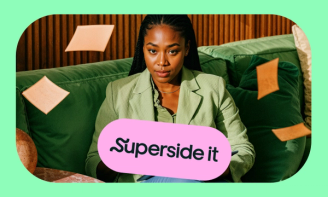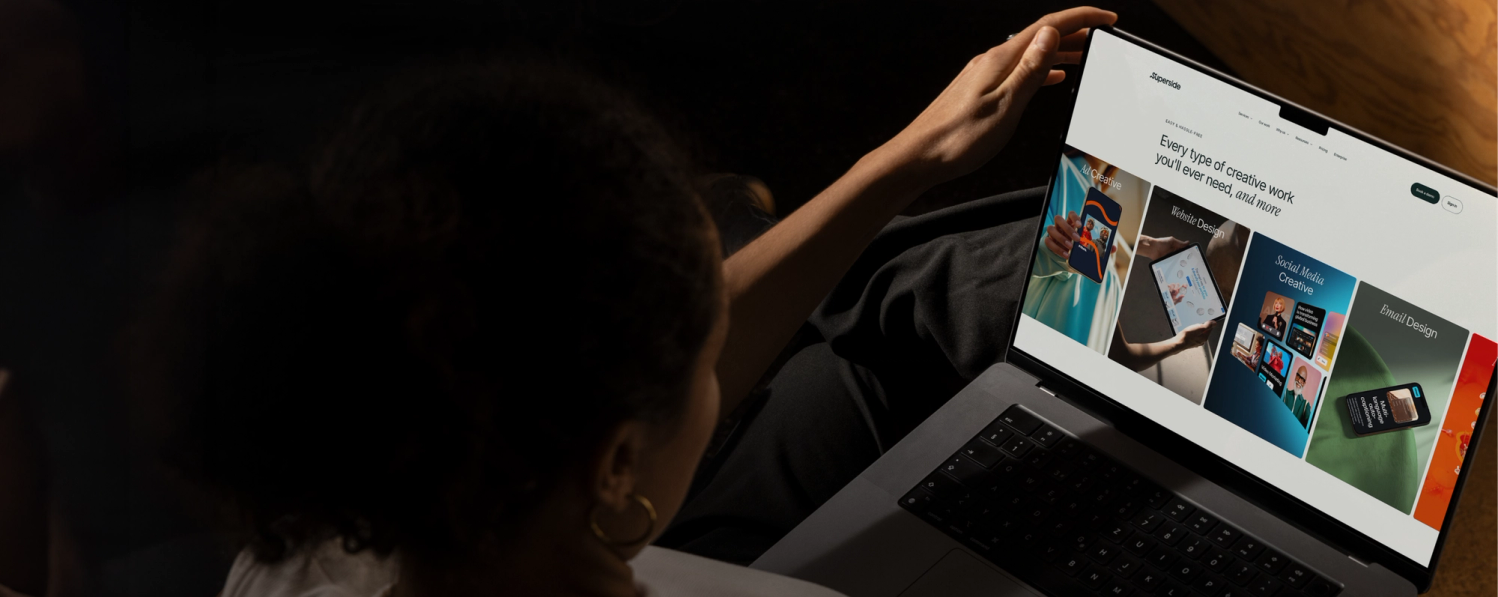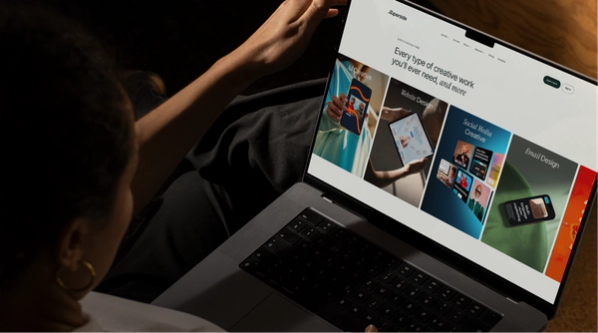8 B2B creative campaigns that broke the mold (with real results)

Saturated channels and identical tactics mean the bar for B2B marketing campaigns has been raised. Success now depends on much more than sleek creative. The best campaigns fearlessly push beyond the ordinary. Explore eight highly original creative campaigns and use these ideas to boost your own enterprise’s campaign visibility.
What’s your biggest challenge in creative B2B marketing? If you answer “keeping up with our competitors,” you’re already off track. A quick scroll through LinkedIn reveals why looking at what others do is a risky strategy: You’ll see generic visuals, dull headlines and the same generic “download our whitepaper” blurbs.
The reality is that the bar B2B brands have to clear today is entirely different from what it was a few years ago. Copying what others do won’t win you business.
Today’s B2B buyers respond best to extraordinary creative and fresh tactics. In fact, LinkedIn’s own 2025 B2B Marketing Benchmark report emphasizes that B2B brands should focus on new creative strategies.
Creativity shouldn’t be something you rush or relegate to the unpaid intern. It should be a team priority, because superb B2B marketing campaign creative can drive sales and real business growth.
Keen to produce standout digital design, a strong web presence, enjoyable B2B videos and more? In this guide, we outline what modern business-to-business creativity looks like, with insights from our very own Damilka Rojas, Senior Creative at Superside.
What makes a B2B campaign “creative?”
In the B2B world, “creative” is often reduced to the bare essentials. A strong color palette, a bold font, a snappy line copy and a good-looking photo. Done deal, right?
Not quite. In 2025, the reality of creative B2B marketing is far more nuanced. The companies you target are likely complex with extended buying cycles, and the audiences you need to persuade consist of multiple decision-making levels. Additionally, your B2B product may be multidimensional and address various business needs.
If you need to communicate an in-depth value proposition successfully, you can’t treat creativity as an afterthought. Instead, the creative process should be seen as a strategic lever that shapes how your messages are received and remembered.
Campaigns that keep this purpose in mind are fundamentally different from those merely aimed at grabbing attention. Let’s take a closer look.
1. Creativity in B2B is about strategic originality, not just visual polish
In a highly competitive marketplace, good creative design and execution is the minimum expectation. The best B2B marketing campaigns go several steps further to rise above the bland, uninspiring creative typically seen on B2B platforms.
Being creative doesn’t mean you should throw out everything that makes your brand and voice recognizable. Instead, you should push boundaries and develop campaigns that are original, unexpected and yet completely on-brand.
For example, a campaign about workflow optimization doesn’t always have to focus solely on the bottom line. If you offer optimization software, you could explain how more free time contributes to a stronger company culture or more opportunities to focus on customer needs. This perspective moves the discussion away from sterile numbers into the realm of emotive storytelling.
Creativity is becoming more important for high-performing B2B campaigns, even though B2B has traditionally been associated with rational, low-stakes creativity and template-heavy execution. Trends like personalization (and the great creative that backs it up) now infiltrate this space as well, especially with so many companies targeting the same personas.

2. Creativity must work within B2B realities
If you ask your marketing team to break the mold or push boundaries, expect some resistance. Real constraints on creative B2B marketing include:
- Long buying cycles: This B2B reality means your creative can’t rely on fleeting cleverness. Your campaigns must be memorable and impactful enough to stay top of mind throughout the months-long decision-making process.
- Multiple stakeholders: Your campaigns must connect with diverse decision-makers and balance their various priorities simultaneously. This is a tough ask, but it can be accomplished if you think creatively.
- Abstract value propositions: B2B marketing often sells complex ideas rather than tangible products. To make your offering feel real and compelling, creativity shouldn’t come at the expense of communicating clear, concrete benefits.
The good news is that the above constraints often catalyze the most innovative and creative ideas. As you’ll see from the examples shared further down, B2B marketing can be both deeply original and firmly based in reality.
The key is a strategic yet practical foundation: Recognize the realities of B2B marketing, but don’t let them limit your creative vision. And remember that the best ideas come from a thorough understanding of your audience’s common pain points and mindset.
Adobe’s recent Content Authenticity Initiative is an excellent example of a B2B campaign that delivered the unexpected. Instead of leading with features and technical information to promote Adobe Content Credentials, the company built a clever campaign around a very timely theme: How do you preserve trust in the age of AI?
Adobe used the abstract idea of trust and authenticity to resonate widely. It then subtly positioned its content verification technology as the solution to customers’ concerns about misinformation and manipulated media.
3. Your assets should address all three levels of B2B creativity
The most effective, creative B2B marketing campaigns deliver impact on multiple levels. They’re smart and emotive, and are flawlessly executed across all formats and touchpoints.
Typically, these campaigns exemplify:
Conceptual creativity: This refers to the “big idea” that drives the campaign and how it’s communicated, e.g., a unique perspective on the pain point the solution addresses. The goal is to highlight something that makes the brand, product or service stand out and be memorable.
A classic example is Dropbox’s “Flow” campaign, which took dry subject matter (workflow optimization) and reimagined it in terms of how the software benefits teams. The campaign told a simple, easy-to-understand story that showed how teams can work more effectively together and accomplish more with the tool.
Emotional creativity: B2B companies sell to people, not just businesses, which creates an opportunity to appeal to both emotion and intellect. What impact does your product or service have on common points of friction? How does it tap into people’s ambition? Can you take a tongue-in-cheek approach to a problem and reframe it with humor?
B2B campaigns tend to be overly rational and lack emotional connection or brand-driven creativity. This often results in campaigns that feel generic or templated, focused only on product specs or benefits rather than truly connecting with the people behind the decision-making. When creative doesn’t resonate on a human level, it’s easy for the message to get lost.

Workday demonstrated how to use emotional creativity effectively in their recent Rock Stars campaign, which featured celebrities such as Gwen Stefani. The campaign used humor to lighten the usually serious topic of agentic AI to demonstrate how AI can improve the workplace.
Tactical creativity: Many B2B marketers roll out every campaign across the same channels in precisely the same way. After all, why mess with success?
But this approach can overlook opportunities to reach new audiences or present content in more effective ways. Success with one format, such as video, doesn’t mean it’s ideal for the next campaign. It’s best to reevaluate formats and channels for each new campaign.
Work through these questions: Are all formats and channels used strategically? Is the campaign well-executed across all touchpoints? Could other channels or formats boost reach and engagement? Are there untapped opportunities to tailor content for different audience segments?
4. Try different types of creative campaigns
While this article encourages creativity and out-of-the-box thinking, certain familiar approaches can help structure and energize your B2B campaigns. These include:
A radical category reframe: With this approach, you redefine how your audience thinks about a problem, i.e., you challenge existing assumptions.
Example: Notion’s redefinition of note-taking as “team knowledge management” differentiates the app and plays a key role in the promotion of its latest AI features.
Taking an unexpected tone: Another trick is to depart from your company or industry’s usual tone. If everyone else’s output is more or less the same, it’s the perfect opportunity to shake things up.
Example: Slack’s tone of voice is warm, empathetic and often downright funny, unlike what most people would expect from a business collaboration app.
A format-first campaign: This involves using an unconventional format to get your B2B brand noticed. An unexpected campaign delivery mechanism, such as a mini-documentary, a game or an influencer campaign, could capture the attention you seek.
Example: HubSpot’s interactive ROI calculators provide prospects with a direct indication of value before they even speak with a salesperson.
Core elements of a high-performing B2B creative campaign
Now that we’ve looked at what makes a strong creative campaign, here are the key elements every B2B brand needs to get right.
1. A differentiated creative concept
The creative concept is the central idea that ties everything together. The best ones are rooted in audience insight and competitive context, but they also bring a fresh, unexpected perspective. This is what makes people stop scrolling and pay attention.
In practice: To stand out, you need to approach the problem differently than your competitors. If your product is a collaboration platform, the default message might focus on productivity or project coordination. Instead, you could highlight the human side—like building a campaign around preventing burnout or creating balance at work.
Why it matters: A strong creative concept gives your audience a reason to care, breaks through industry noise, and keeps your brand top of mind.
2. Strong narrative and brand alignment
Your narrative should deliver a consistent, on-brand message across every campaign asset. It needs to reflect your brand values while appealing to both logical and emotional decision-makers.
In practice: Let your concept guide the story across every touchpoint. For a CRM platform, that could mean showing logical buyers how features improve efficiency while also highlighting the emotional impact—building stronger relationships with customers. The story becomes memorable when you echo these messages everywhere your audience interacts with your brand.
Why it matters: B2B decisions rarely come down to one person. A clear, on-brand narrative helps you reach multiple stakeholders with different priorities while staying aligned to your core values.
3. Channel- and format-intelligent design
Repurposed assets rarely work well everywhere. Each platform has its own strengths, and your creative needs to be tailored accordingly.
In practice: Avoid a one-size-fits-all approach. A three-minute video might work on YouTube but will flop on LinkedIn. A 90-second cutdown could perform far better. Repurposing is fine, but only when it’s adapted to the channel and audience expectations.
Why it matters: B2B buyers are overloaded with information. Content delivered in the wrong format gets ignored. Channel-specific creative boosts engagement and impact.
4. Team orchestration across brand, demand and creative
Misalignment between teams slows campaigns down and weakens results. A cross-functional approach keeps everyone on the same page.
In practice: Involve all teams—brand, demand, and creative—from the start. The brand team cares about identity, demand cares about performance, and creative cares about execution. Leaving one out leads to conflicts later. Collaborative ideation creates buy-in, avoids bottlenecks, and makes success metrics clear from the beginning.
Why it matters: Siloed teams create disjointed campaigns. Alignment leads to stronger ideas, faster execution, and campaigns that hit both creative and business goals.
5. A clear measurement strategy
Every campaign needs a way to measure success beyond surface-level metrics.
In practice: Don’t stop at MQLs. Use testing to understand which creative elements—visuals, hooks, CTAs—actually drive results. A/B test different versions across channels and track performance in real time. Tools like Superads.ai can help you spot top performers and optimize quickly.
Why it matters: A solid measurement strategy lets you connect creative decisions to business impact. With data on what works and why, you can refine campaigns in real time and build smarter ones in the future.
A high-performing campaign should go beyond the surface and speak directly to the user’s needs, emotions and context. That’s what makes it memorable and effective. Telling a compelling story should always be a must. It’s what drives engagement. And of course, embracing bold, high-quality design elevates everything.

8 creative B2B campaigns that broke the mold (and why they worked)
If you want a clearer picture of what phenomenal B2B creative campaigns look like in action, you’ll enjoy these eight notable examples:
1. Boomi x Superside B2B marketing campaign
Our first campaign example features Superside’s creative collaboration with Boomi, pioneers of integration-as-a-service (iPaaS).
Boomi’s goal was to completely revamp its lead-gen creative. Its previous ads followed the typical B2B style: Flat, professional and safe. Superside’s brief called for an edgy, witty approach that would keep costs low and production timelines under control.
Superside brings in top-tier creative professionals who not only understand brand guidelines inside and out, but also know how to apply them effectively across different formats and platforms. Our biggest strength is delivering consistent, high-quality design at speed and scale, whether it’s strategy, ideation or execution. Because we operate across time zones with specialized design pods, we offer creative bandwidth that many internal teams struggle to maintain.

What made it a superb creative B2B campaign:
In true Superside style, we rose to the occasion and completely transformed Boomi’s creative assets with a fusion of bold 3D-style visuals, next-level design and AI-assisted asset generation. Our goal was to create a look that was bright, bold and challenging, accompanied by punchy copy that would demand attention in the B2B space.
The result wasn’t just a facelift. It was a complete creative shift that redefined how Boomi ads appear and resonate on platforms like LinkedIn. Our creatives also reshaped the benchmark for B2B tech brand creativity.
Clear communication and strong organization are essential for delivering successful creative projects. One of the best tools for alignment is a well-defined creative brief, a true source of truth that sets the direction and keeps everyone on the same page from the start. That’s all managed by us at Superside.

To make it happen, Superside used tools like Adobe Firefly and Midjourney to explore a wide range of concepts. Then, we refined the best ones into highly polished, brand-aligned assets that delivered great results.
How the campaign broke the mold:
- Boomi’s new style introduced a playful, conversational tone in a space dominated by dry specs and even drier copy.
- We used AI tools not just for speed, but to trial multiple creative possibilities and maintain quality.
- Superside’s process delivered three times the asset volume compared to traditional workflows. At the same time, we didn’t compromise on visual impact or storytelling.
- We reframed Boomi’s technical benefits and potentially dry subject matter into high-concept visual metaphors that captured attention.
Results:
- Over 75 unique visual assets generated.
- A 24% engagement rate on LinkedIn (well above the 1–3.5% average).
- Internal rave reviews from Boomi’s global creative and social leads.
- A scalable new visual system for Boomi to use across future campaigns.
The key takeaway: This campaign exemplifies what’s possible when you combine strategic creative brains, AI-assisted production and brand courage. It increased clicks and reshaped how Boomi shows up across digital marketing touchpoints.
2. Pinterest’s “P is for Performance”
(Source: Pinterest)
Pinterest’s take on how advertisers can use the platform’s new Performance+ features to convert Gen-Z viewers into buyers is another campaign to add to your go-to collection of ideas.
What made it a superb creative B2B campaign:
Let’s start with the obvious: The old-school action movie angle immediately grabs attention and makes the creative stand out in a sea of “meh” B2B clones. We also love that Pinterest went full throttle and created six mini action movies, complete with hilarious heroines.
“We took a moviemaking approach and tapped exceptional talent from the film industry to craft a high-action story that breaks through the conventions of B2B marketing,” Xanthe Wells, Pinterest’s VP of Global Creative, shared.
The campaign was run on paid social media, in trade publications and promoted through the company’s PR department.
How the campaign broke the mold:
- Pinterest’s campaign launched the platform firmly into the B2B market, but with a major twist on how products are typically advertised in that space. Instead of dull and flat, the brand opted for bright and fun to align with the platform’s identity.
- The playful characters and narrative took the campaign presentation from potentially dry and corporate to truly exceptional (no mean feat in brand-led B2B marketing).
Results:
Pinterest reported massive success in the form of:
- A 10pt lift in improved performance products.
- 300 million impressions.
- 115+ million video views.
- A video completion rate of 84% (up from the usual 78%).
- More than a million clicks on the Pinterest business site.
The key takeaway: Don’t be afraid to take risks, especially if your goal is to capture the attention of new audiences or reach a broad audience. Just like B2C customers, B2B audiences also appreciate being entertained.
3. Loom’s ABM B2B marketing campaign
(Source: Loom)
Loom’s account-based marketing (ABM) campaign applied a new twist to targeted B2B advertising.
What made it a superb creative B2B campaign:
Loom’s campaign approach was highly strategic and targeted, and took ad personalization to the next level. Alongside AR and user-generated content, personalization is a major advertising trend. However, mastering it remains an art form.
In Loom’s case, personalization meant laser-focused targeting, with ads that included the recipient’s company logo, called out the company by name in the copy, and directly addressed customer pain points. Posted to LinkedIn, the ads targeted specific companies and job titles.
How it broke the mold:
- Loom’s ad templates included details like how many members of the recipient’s team already used their solutions. This social proof enhanced trust and increased the likelihood that the target companies would expand their investment in Loom products.
- The campaign gave prospects the impression that each ad was uniquely crafted for them. This increased the chances they would click through to the Loom website and convert.
Results: Loom reported a 2-3.5% CTR, much higher than the standard 0.4-0.5 seen for LinkedIn ads.
The key takeaway: Loom’s approach demonstrates that B2B creativity extends beyond the visual appearance of creative campaign assets. Getting creative with your strategy, approach and audience segmentation is just as important.
4. Dell x Reddit I.T. Squad
(Source: Shorty Awards)
Dell’s I.T. Squad campaign, which tapped into social media trends, is a brilliant example of how to meet your B2B audience where they are.
What made it a superb creative B2B campaign:
Companies like Dell face a unique challenge: Their target market, the decision-makers who sign off on IT purchases, often lack trust in IT providers. The solution? Tap directly into the social media channels where your audience is most active and create a social media campaign that earns their trust.
For this campaign, the industry leader partnered with Reddit to run a series of ads that featured characters designed to resemble Reddit avatars. They also produced an animated mini-series in which two characters, Ryan and Bryan, discussed IT challenges.
The kicker: Each episode was based on real themes and IT conversations shared on Reddit at the time. This meant that the campaign quickly gained popularity and earned trust from a hard-to-reach audience in a notoriously fickle social space.
How it broke the mold:
- Brands often struggle to successfully penetrate platforms like Reddit, and it takes real innovation to capture audience attention in this space. Dell brilliantly partnered with the platform and created characters that would resonate deeply with its target audience.
- Dell used real topics and conversations on the platform to make the brand part of a natural dialogue. Pure marketing gold.
Results: Dell’s award-winning ad campaign delivered:
- 72 million impressions.
- A +1,000% increase in followers.
- A 200x jump in brand credibility.
- A view-through-rate (VTR) that topped typical social campaigns by more than 35%.
The key takeaway: Joining your audience’s conversations is a bold strategy that can certainly pay massive dividends. Ensure you thoroughly understand your target audience, or your campaign may fall short.
5. Spotify’s “Spreadbeats”
(Source: Activation ideas)
Spotify’s “Spreadbeats” campaign used a distinctive format to convey an equally distinctive value proposition. It worked like a charm.
What made it a superb creative B2B campaign:
Spotify’s goal was to win over video-obsessed corporate media planners with the platform’s video ad capabilities (not an easy task when you’re an audio platform).
To grab attention, Spotify delivered its campaign in the format where media planners spend the most time: Inside an Excel spreadsheet. The creative team coded a full music video to play within a spreadsheet and then customized it for each targeted recipient.
The result: A campaign that truly pushes creative boundaries.
How it broke the mold:
- Spotify reinvented a format that most people typically consider “boring.”
- The campaign also sparked the idea that formats can surprise you. Of course, this was exactly what they wanted to communicate to an audience that didn’t see their platform as a go-to for video campaigns.
Results: Spotify achieved:
- A 17:1 ROI.
- +5,650% more email forwards than the B2B average.
- 870% more ad engagement than previous campaigns.
The key takeaway: Nothing grabs attention like a radical reframe, especially if your starting point is a format that everyone thinks they know inside and out.
6. GFK’s “Human vs. AI”
(Source: Nielsen IQ)
German market research firm Growth from Knowledge placed itself squarely in the conversation about AI with a powerful brand awareness campaign.
What made it a superb creative B2B campaign:
Organic growth in brand loyalty and awareness can be incredibly hard work in the B2B space. Many brands attempt to insert themselves into broader conversations, such as those surrounding AI, but it requires genuine finesse to do it effectively.
GFK pulled this off perfectly with a video that showcased a conversation between their CMO, Gonzalo Garcia, and a ChatGPT avatar called Ruby. The clever twist: It tested whether the AI could win a marketing debate with Gonzalo.
The campaign generated a lot of buzz and firmly placed the brand inside a very popular topic.
How it broke the mold:
- GFK’s goal was to increase brand visibility as a thought leader in the AI space. But instead of simply advertising its AI tools, the brand jumped into a much bigger conversation that’s on all of its prospects’ minds.
- Introducing a human-like AI avatar for the debate added a clever twist that reinforced the main message: “Can AI do exactly what we can?” (Spoiler: Gonzalo won the debate.)
- GFK leaned into influencer marketing to promote the debate, which generated a significant amount of brand exposure and engagement.
Results: GFK’s bold strategic planning paid off with a major spike in brand awareness. They also reported:
- 7 million impressions (2 million more than projected).
- An 8/10 average LinkedIn campaign quality score.
- Meaningful connection to their B2B audience through influencer marketing.
The key takeaway: “Newsjacking” isn’t new, but strategically inserting your brand into a larger conversation can be an effective way to raise brand awareness. This is particularly true if you do it in a way that makes people sit up and take notice.
7. Amazon’s “Buy smarter, dream bigger”
(Source: Shorty Awards)
To attract attention to their procurement brand, Amazon Business, the tech giant rolled out an exemplary multichannel marketing campaign.
What made it a superb creative B2B campaign:
Amazon is known for many things, but corporate procurement doesn’t usually spring to mind. This meant Amazon Business faced a significant challenge when the business division wanted to gain visibility among B2B procurement teams.
To get there, they started with a good slogan: “Buy smarter. Dream bigger.” First, they combined the slogan with bright, warm visuals. Then, they introduced an entirely new business concept called “smart business buying” or “SBB,” which refers to the brand’s ML-optimized procurement offering.
Amazon Business rolled out the new concept across multiple channels. Targeted video ads, banner ads and live events all formed part of the extensive campaign. The result was a stylish and highly successful campaign that far exceeded expectations.
How it broke the mold:
- Amazon’s fresh campaign design was a departure from the traditional “corporate” B2B playbook.
- The brand tied its new offering to a brand-new business concept and positioned it as an investment for savvy business leaders and future-focused B2B buyers.
- Amazon used event marketing to further promote the thought-leadership angle.
Results: The campaign massively boosted awareness of Amazon Business with:
- 3.5 billion impressions across multiple channels.
- More than 781 million video views.
- 7.7 million unique visitors to Business.amazon.com.
The key takeaway: The numbers listed above might be the product of Amazon’s massive influence, but any B2B business can apply the principles they used. Redefine your offering to make it aspirational; then advertise across multiple channels for maximum impact.
8. Schneider Electric’s “Unsung heroes”
(Source: The Drum)
Schneider Electric’s laser-targeted campaign is a perfect example of how to leverage technology for a creative advantage.
What made it a superb creative B2B campaign:
The campaign concept was born from a realization that the brand’s current marketing efforts (specifically for its digital transformation solutions) overlooked a key audience segment: Data center decision-makers and influencers. Schneider Electric’s marketing team recognized the need to create bespoke and valuable marketing content to connect with this “invisible” segment.
Subsequently, they used AI to explore what this new segment valued and inform the development of a more personalized strategy. The result was slick copy and visuals that effectively addressed the challenges faced by data center managers.
From here, the team rolled out the campaign in accordance with best practices. First, they built awareness; then, they zeroed in on engagement and conversions.
How it broke the mold:
- The company used AI to create a comprehensive ideal customer profile. They successfully used first-party customer data and third-party firmographic, behavioral and technographic signals to inform the process.
- Schneider Electric also used AI for psychometric profiling to help develop empathetic, personalized content. This move took the brand beyond its usual content formats (e.g., whitepapers and eBooks) and encouraged the marketing team to explore new formats that would resonate with the brand’s target market.
Results: Schneider’s brand-led B2B marketing campaign was hugely successful. It generated:
- A 39:1 ROI.
- A 71 million Euro pipeline.
- A 77% increase in Average Opportunity Value (typical monetary value of sales opportunities in a company’s pipeline during a given period).
The key takeaway: As technologies like AI and AR become more common in B2B marketing campaigns, they offer superb opportunities to engage target audiences in innovative, unexpected ways.
How to win trust, attention and market share with superb B2B creative
In an intensely competitive B2B marketing space, great creative can help your brand grab attention and influence key decision-makers over long buying cycles.
As all the examples in this guide demonstrate, the brands that come out on top aren’t simply louder. They’re braver, smarter and more original than the competition. And yet, most B2B brands still default to “professional, but forgettable.”
The good news? When you partner with a strategic, AI-enabled creative service like Superside, you win all the way. We’re not just a design partner; we’re a creative engine built for ambitious B2B teams.
B2B marketing campaigns often involve multi-format execution (ads, landing pages, sales decks, explainer videos and more). A centralized creative partner like Superside ensures the brand identity remains cohesive and impactful throughout the entire customer journey.

If you make us your creative team’s creative team, you tap into:
- AI-accelerated workflows that guarantee fast turnarounds and top-quality enterprise campaign execution.
- A global creative team that delivers strategic depth and executional muscle.
- Deep B2B expertise across several verticals, from brand, strategy and product to creative performance.
Why blend in when you can make a lasting impression with a truly memorable campaign? Simply Superside it.
Meet Roger, a content marketer driven by his love for online search, digital marketing, and performance marketing. When he's not immersed in the latest updates on Google, AI and social media, you'll find him passionately crafting strategies to simplify online searches for people, sparing them the frustration of navigating through endless pages. As a marketer, Roger Match has turned into the perfect match for Superside, helping us showcase our purpose, objectives and essence to the world.
You may also like these
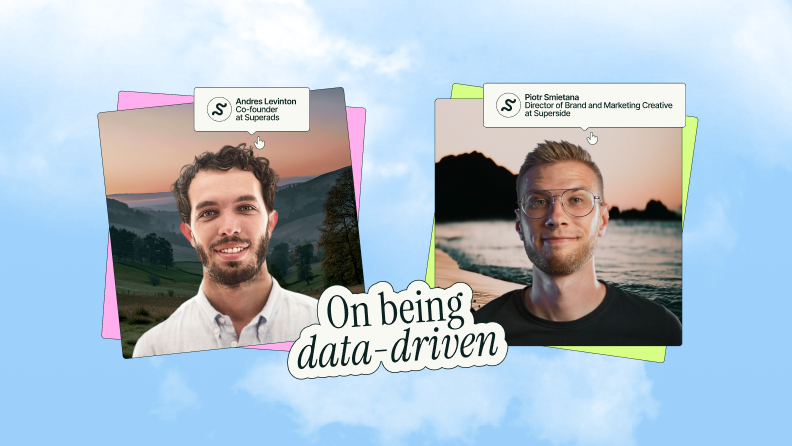
More than a feeling: Inside a marketing-creative duo's data-driven mindset
Great campaigns don’t just look good—they perform. But getting creative to yield real business results requires more than just good instincts or a clever tagline.In today’s landscape, where every impression counts and attention is scarce, you need strategy. You need insight. And most importantly, you need alignment between the creative and the data.In other words, being data-driven is essential. For Andres Levinton, Co-founder at Superads, and Piotr Smietana, Director of Brand and Marketing Creative at Superside, this doesn’t mean choosing data over creativity—it means using both, intentionally. Levinton and Smietana dug into what that looks like in our latest guide, Inside Great Creative Partnerships, including: Why dashboards aren't everything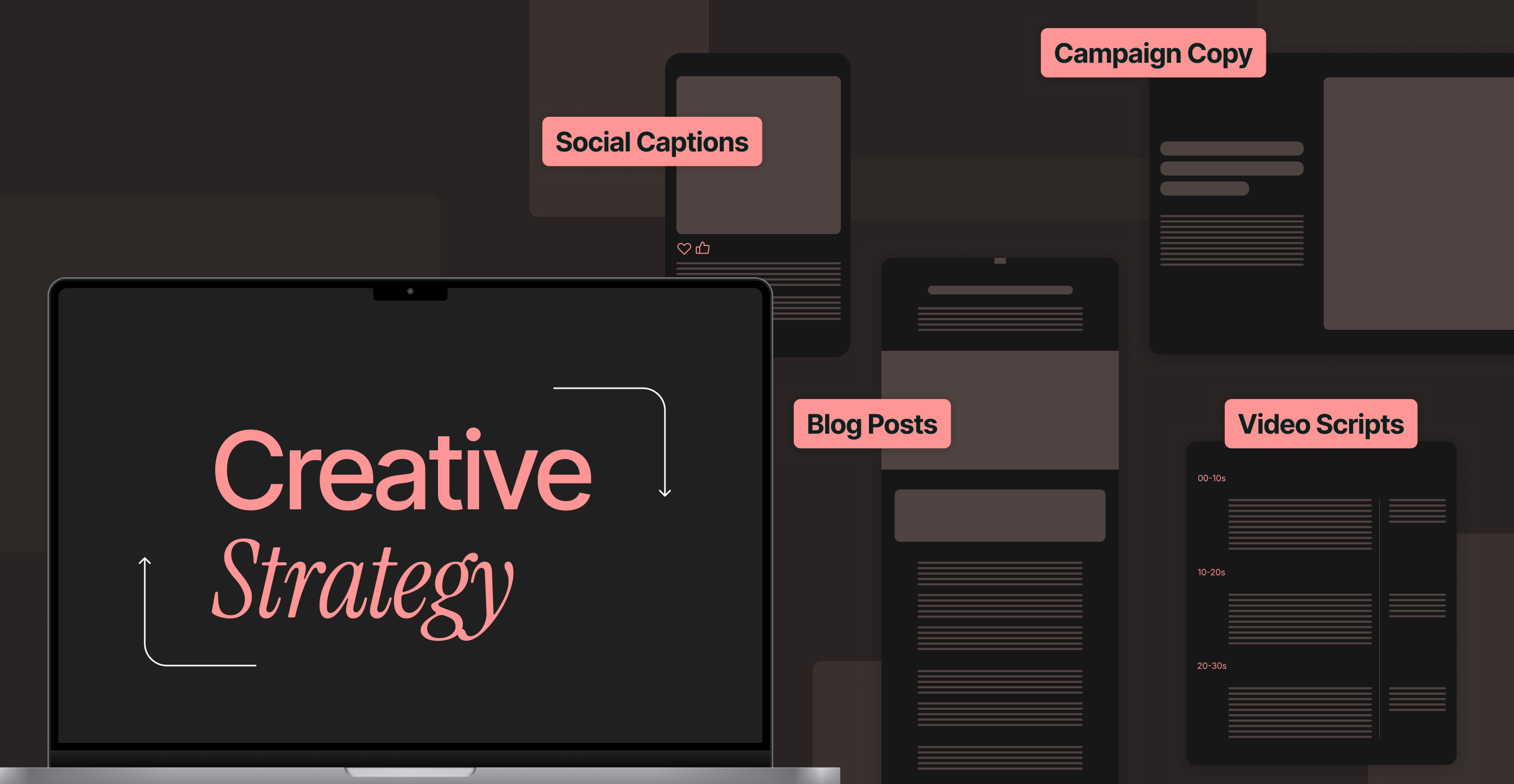
10 creative content agencies making brands shine in 2025
Enterprise content is everywhere, yet much of it fades into the background and fails to deliver results.A key challenge is that many brands still rely on predictable content formats and safe messages that don’t capture or sustain customer interest. With AI in the mix, the barrier to content production has dropped significantly. But this often results in output that feels bland, repetitive and, frankly, a bit robotic.At a time when millions of brands vie for your target customers’ attention, success hinges not just on a strong product or clever brand positioning but on content that’s creative, emotive and visually distinct.This is where top creative content agencies bring real value. They help enterprises leave an impression with fresh, innovative ideas, flawless execution and a consistent brand voice that builds trust and recognition.In this article, we dive into what these agencies do and why they’re vital for modern, performance-driven content marketing. We also showcase 10 trusted creative content agencies that can help your brand get the attention it deserves.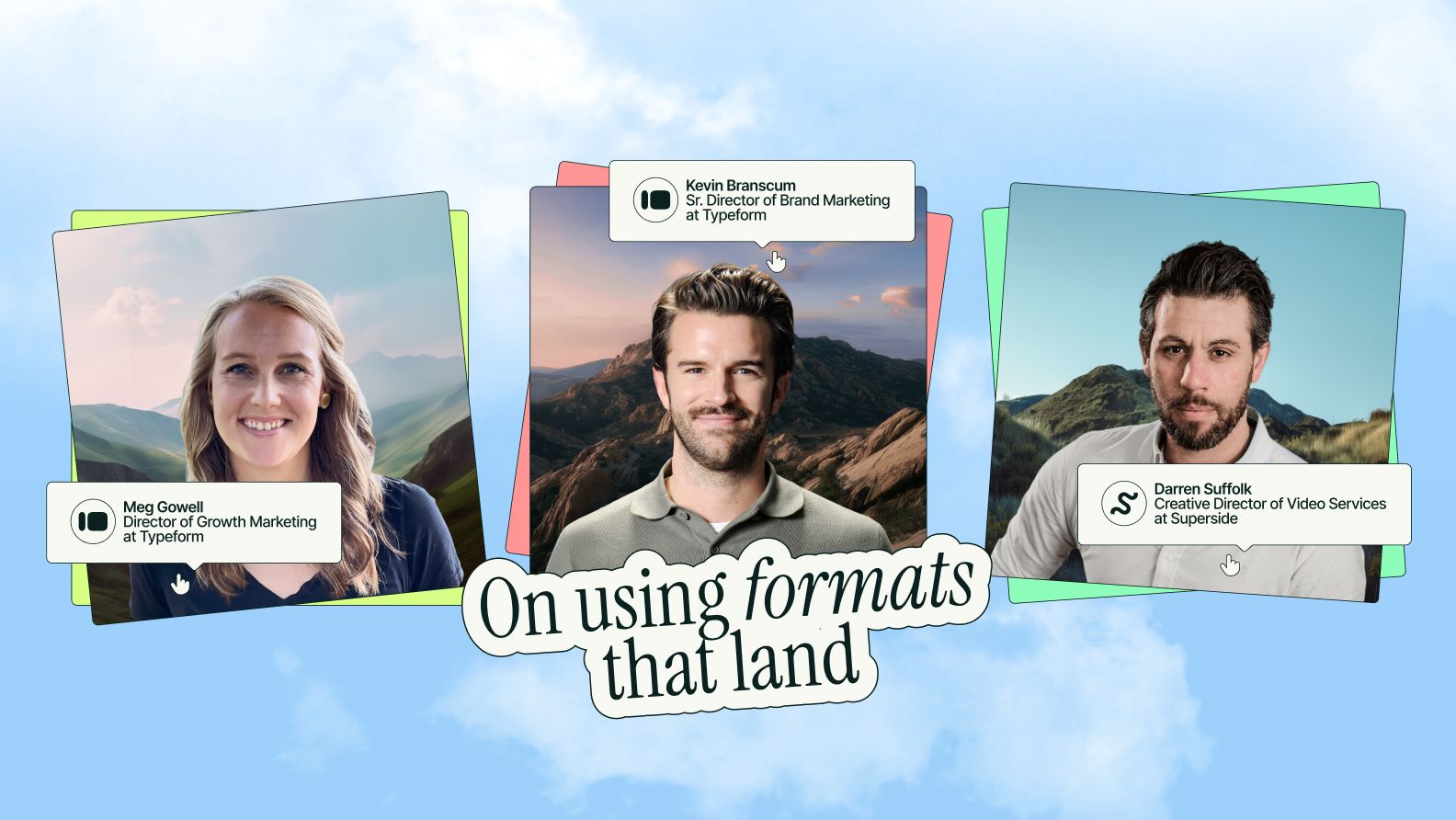
Formats that land: Inside a growth and brand team's recipe for results
There’s no singular formula for breakthrough creative.But if there’s a throughline, it’s this: The formats you choose matter as much as the message you’re trying to send. In an era where attention is currency, getting the right mix of video, visuals and content isn’t just a nice-to-have—it’s a growth imperative.To unpack what that mix looks like, we talked to Meg Gowell and Kevin Branscum, from Typeform’s growth and brand teams, and Darren Suffolk, from Superside’s video team for our latest guide: Inside Great Creative Partnerships. Bringing together both the creative and marketing perspectives, they shared: What success looks like across teamsWhy video (still) wins









